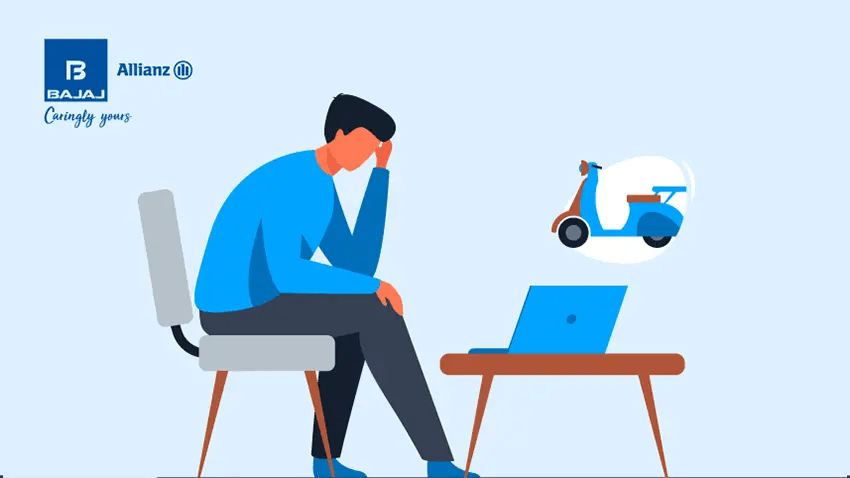Raising a bike insurance claim is the last thing you might consider doing when buying one. While most buyers choose to buy one for the sake of legal compliance, a
two wheeler insurance cover offers some real advantages, in terms of financial coverage for damages. Traditionally, bike insurance plans required the policyholder to pay for the repair costs at first, which were then subsequently followed by the insurance company’s reimbursement. This required policyholders to shell out money despite having the protection of an insurance plan.
Modern insurance plans are equipped with a cashless facility, where the insurance company directly pays the repair costs without the policyholder being required to pay for the expenses. This helps directly settle the steep repair bills, making the entire experience for the policyholder a cashless one.
Let’s look at cashless insurance plans and how to buy one.
What Does Cashless Bike Insurance Cover?
Cashless bike insurance covers are policies enabling the policyholder to settle insurance claims without having to pay for the costs at first. Instead, the insurance company directly settles the repair cost with the service garage. The only caveat is that these repairs to your bike need to be carried out at a network garage (which are affiliated service garages with the insurance company). This affiliation enables the insurer to directly settle the admissible expenses for any repair costs of the policyholder.
Even when you buy a cashless two-wheeler insurance plan, the entire settlement is not cashless. You will be required to pay for the mandatory deductible of your policy, a nominal amount, and any voluntary deductible that you might have chosen. * Standard T&C Apply
What are the Advantages of Cashless Two-wheeler Insurance Plans?
Here are some noteworthy benefits of a cashless insurance cover:
The primary advantage of a cashless plan is that you, the policyholder, do not need to pay upfront for the hefty repair costs (which are different from the policy deductibles). So, it becomes a hassle-free claim experience where the insurance company takes care of the majority of formalities regarding payments. *
Compared to traditional reimbursement insurance covers, cashless policies are quickly settled, as the network garage is affiliated with the insurance company. Thus, the claim process is swift. *
Cashless plans feature limited documentation, helping you keep the overall process short. All the necessary repair bills are submitted directly by the network garage to the insurance company with only a claim form left to be submitted by you. *
Documents required for the Cashless Bike Insurance claim
- Bike Insurance Policy: Copy of the active bike insurance policy.
- RC Book (Registration Certificate): Proof of bike ownership.
- FIR (First Information Report): Required in case of theft or accident.
- Aadhar Card: Identity proof of the policyholder.
- Driving License: Valid driving license of the rider.
- Claim Form: Duly filled claim form provided by the insurer.
- Repair Estimate: A detailed estimate from the authorized repair center.
- Photos of the Accident: Images of the damaged bike and accident scene (if applicable).
Procedure for Cashless Services on Two-Wheeler Insurance
- Inform the Insurer: Notify your insurance company immediately after an accident or damage.
- File the Claim: Submit the claim request with details of the incident and policy information.
- Surveyor Inspection: The insurer will assign a surveyor to assess the damages at the network garage.
- Submit Documents: Provide necessary documents like the claim form, driving license, RC book, and policy copy.
- Approval from Insurer: After verification, the insurer approves the repair cost as per the policy terms.
- Repair at Network Garage: Get your bike repaired at the insurer’s authorized network garage.
- Settlement: The insurer settles the bill directly with the garage, and you only pay for non-covered expenses.
How to Raise a Cashless Bike Insurance Claim?
In the unfortunate event, your two-wheeler is damaged, you must follow the following steps to raise a cashless bike insurance claim:
- Locate the closest network garage to the location of the incident and take your vehicle there.
- Inform the insurance company of the event damaging your vehicle.
- Provide necessary documents, like proof of identity, valid driving license, vehicle registration certificate, and address proof to the insurance company along with the claim form.
- Inspection by the insurance surveyor is a crucial step for cashless claims. This inspection helps the insurance company determine the extent of damages and the approximate repair costs.
- Any repairs that are required shall be carried out after the surveyor’s inspection and the repair bills shall be submitted to the insurance company.
- All expenses covered by your insurance policy’s terms will be paid by the insurer and any balance cost will be required to be paid by you.
*Standard T&C Apply
While many two-wheeler policies are available in the market, with the benefits of cashless
two wheeler insurance price shouldn’t be the only consideration when selecting a plan. In deciding which policy to select, a
two wheeler insurance premium calculator can be a handy tool that aids the policy purchase.
Insurance is the subject matter of solicitation. For more details on benefits, exclusions, limitations, terms, and conditions, please read the sales brochure/policy wording carefully before concluding a sale.
 Service Chat:
Service Chat: 

